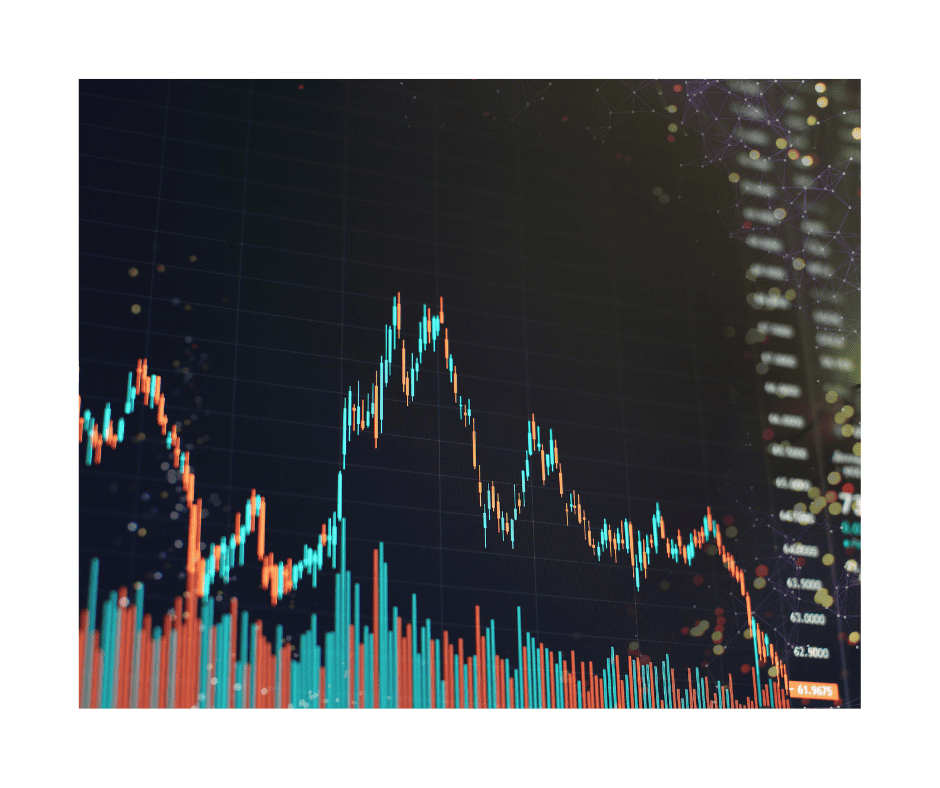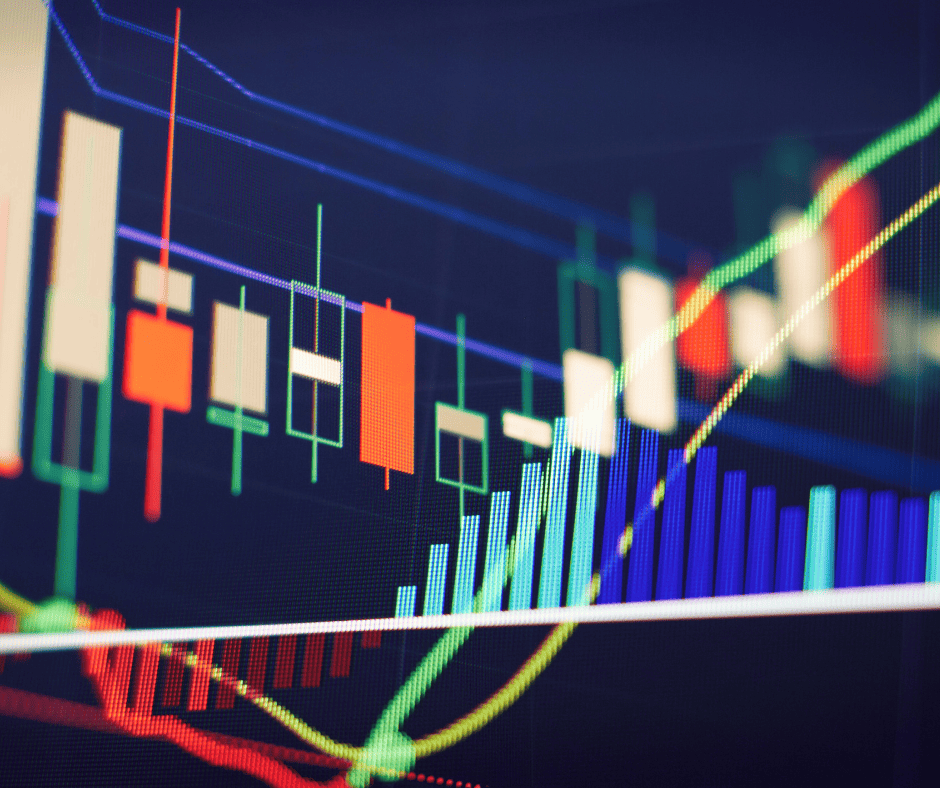Trading using only technical indicators? Can you be successful this way?
This article examines the practicality of this idea, exploring the role of technical indicators in Forex trading, their strengths and limitations, and practical strategies you can use.
What are Technical Indicators?
Technical indicators are mathematical calculations based on a currency pair’s price.
These tools help you analyze past market data to predict future price movements.
Common technical indicators include Moving Averages, Relative Strength Index (RSI), Bollinger Bands, and Fibonacci retracements.
The Case for Technical Indicators
Technical indicators have become a cornerstone in the toolkit of many Forex traders, and for good reason.
Their ability to translate market data into actionable insights makes them invaluable in various trading scenarios.
Here is a more detailed explanation of why people commonly use these indicators.
- Precision in Market Analysis: Technical indicators provide precise, quantifiable data that helps make more informed trading decisions. For example, by indicating Momentum and Direction, the Moving Average Convergence Divergence (MACD) offers clear signals for potential buy or sell opportunities.
- Diverse Applications: There’s a broad spectrum of technical indicators, each serving different purposes. While trend indicators like moving averages help identify the direction of market movement, oscillators like the Stochastic Indicator are crucial in determining overbought or oversold conditions. This diversity lets you choose indicators that best fit your trading style and objectives.
- Enhancing Risk Management: Technical indicators play a significant role in managing trading risks. Tools like the Average True Range (ATR) help you to set stop-losses and manage position sizes by providing insights into market volatility.
- Supporting Entry and Exit Strategies: Traders rely on technical indicators to determine optimal entry and exit points. By setting specific criteria based on indicator readings, you can systematically enter and exit trades, which helps in avoiding emotional or impulsive decisions.
- Historical Performance Analysis: Technical indicators allow you to analyze historical price movements and patterns. This analysis can help develop strategies that benefit from recurring market trends.

- Customization and Flexibility: Many technical indicators are customizable, allowing you to adjust parameters like periods to suit your trading strategies. This flexibility ensures you can tailor the indicators to fit various market conditions and personal preferences.
- Facilitating Automated Trading: Technical indicators are essential in the algorithmic trading era. They form the basis of many trading algorithms and automated systems, enabling you to execute strategies at a speed and consistency that would be impossible manually.
- Psychological Market Insights: Beyond numerical analysis, some technical indicators offer insights into market psychology. For instance, the Fibonacci Retracement levels are based not just on mathematical ratios but also on the psychological tendencies of traders.
- Complementing Other Forms of Analysis: Using technical indicators in conjunction with other forms of analysis often produces the best results. This multifaceted approach can provide a more comprehensive market outlook.
In essence, technical indicators are potent tools for deciphering market movements, aiding decision-making, and enhancing trading performance.
However, you should also be aware of their limitations and consider integrating them with other analysis forms for a well-rounded trading strategy.
Relying Solely on Technical Indicators
While technical indicators are invaluable tools in Forex trading, relying on them exclusively can pose certain risks and limitations. You must be aware of these constraints to avoid potential pitfalls:
- Lagging Nature of Many Indicators: A significant limitation of technical indicators is their lagging nature as they rely on past data. While they can indicate trends and patterns, they cannot inherently predict future movements accurately. This limitation can lead to delayed responses in fast-moving markets, causing traders to miss optimal entry or exit points.

- False Signals and Over-Reliance: Indicators occasionally produce false signals, especially in sideways or less volatile markets. You might make erroneous trades based on misleading information if you rely solely on these signals. Over-reliance on indicators without considering the broader market context can exacerbate this issue.
- Complexity and Over-Analysis: The Forex market has a plethora of technical indicators available, and using too many simultaneously can lead to confusion and analysis paralysis. You may find yourself overwhelmed by conflicting signals, making it difficult to make clear and timely decisions.
- Insensitivity to Market Context: Technical indicators do not account for sudden market changes caused by political events, economic data releases, or central bank decisions. These factors can drastically affect currency prices, rendering technical analysis less effective.
- One-Size-Fits-All Pitfall: Many traders apply the same set of indicators across different currency pairs and timeframes without considering the unique characteristics of each. This generic approach can lead to suboptimal trading strategies, as other market conditions require various analytical tools.
- Underestimating Market Psychology: Technical indicators focus on price movements and patterns, often overlooking the human element of trading — market psychology and trader behavior. These human factors can significantly influence market movements, especially in extreme conditions.
- Ignoring Fundamental Analysis: Fundamental analysis, which involves evaluating economic, geopolitical, and financial factors, is crucial in Forex trading. Trading using only technical indicators means missing out on the broader economic picture that can drive market trends.

- Reduced Effectiveness in High Volatility: During periods of high volatility or thin liquidity, technical indicators may become less reliable. Price gaps and sharp movements can disrupt the usual patterns that indicators rely on, leading to inaccurate readings.
- Difficulty in Adapting to Changing Markets: Markets evolve, and what worked in the past may not work in the future. A strategy solely based on static technical analysis may fail to adapt to new market dynamics, resulting in decreased performance over time.
To address these limitations, consider a balanced approach that combines technical indicators with fundamental analysis and market sentiment. This holistic approach can offer a more nuanced and effective trading strategy.
Combining Technical Indicators for Enhanced Analysis
Merging different technical indicators can offer a more nuanced and comprehensive approach to Forex trading. Here’s a deeper exploration of how combining technical indicators can enhance market analysis:
- Using Complementary Indicators: Successful traders often pair complementary indicators to gain diverse market insights. For instance, combining Trend-following indicators (like moving averages) and Momentum indicators (like the RSI or MACD) can provide a more complete picture of market conditions. While one identifies the trend direction, the other can signal strength or weakness within that trend.
- Creating Confluence for Stronger Signals: Confluence occurs when multiple indicators give the same trading signal. For example, if a Fibonacci retracement level coincides with a critical moving average, it may signify a more substantial Support or Resistance level. Confluence often leads to more robust and reliable trading signals.
- Sector Analysis for Currency Pairs: Using technical indicators to analyze different sectors related to currency pairs can provide additional insights. For instance, analyzing commodity markets for currency pairs like AUD/USD or USD/CAD, as commodity prices heavily influence their economies.

- Indicator Divergence for Warning Signals: Divergence occurs when the price and indicators move in opposite directions. Spotting divergences, especially when using Momentum indicators like RSI or MACD, can be a powerful warning of potential reversals or market weakness.
- Cross-Validation with Non-Correlated Indicators: Using non-correlated indicators can provide cross-validation of signals. This method reduces the chances of false signals, as it is unlikely for non-correlated indicators to give simultaneous false readings.
By strategically combining technical indicators, you can refine your analysis, enhance your decision-making process, and improve your overall trading performance.
However, it’s important to remember that no combination of indicators will be infallible. Continuous learning, testing, and adaptation are essential to successful trading.
Practical Strategies for Using Technical Indicators
Effectively utilizing technical indicators in Forex trading requires more than just understanding their functions; it involves strategic application and discipline.
Here’s an expanded look at practical strategies for using technical indicators:
- Start with a Simple Setup: Beginners should begin with a simple and straightforward setup, using one or two key indicators to avoid overwhelming themselves. For example, starting with a basic moving average for trend identification and RSI for momentum can provide a solid foundation for understanding market movements.
- Continuous Learning and Adaptation: The Forex market is dynamic, and so should be the approach to using technical indicators. Regularly updating knowledge about indicators, market trends, and economic factors is vital. Adapting strategies to changing market conditions can help in maintaining trading effectiveness.

- Setting Realistic Expectations: Understanding that no indicator provides 100% accurate signals all the time is essential. Setting realistic expectations about the performance of technical indicators can help maintain a balanced psychological state, which is crucial for decision-making in trading.
- Use of Price Action: Integrating price action analysis with technical indicators can enhance trading decisions. Observing patterns such as candlestick formations with indicators can provide more reliable signals and a better understanding of market sentiment.
- Diversifying Indicator Types: A mix of indicators (Trend, Momentum, and Volatility) can offer a more holistic market view. This diversification helps confirm signals and reduce the likelihood of false positives.
- Avoiding Overfitting: When customizing indicators, it’s crucial to avoid overfitting – setting parameters too closely to historical data that they don’t perform well in real-time markets. The goal is to find a balance that offers adaptability to various market conditions.
- Regular Review and Analysis: Regularly reviewing trading results and analyzing the performance of used indicators is crucial. This review process helps identify what works and what doesn’t, allowing for continuous improvement of trading strategies.
- Correlating Technical and Fundamental Analysis: While technical indicators are powerful, correlating their signals with fundamental analysis can provide deeper insights. Understanding economic reports, policy changes, and global events can add context to the technical analysis.
- Discipline in Following Signals: One of the key strategies is the discipline in following the signals provided by technical indicators. Ignoring or second-guessing indicator signals can lead to inconsistent trading and potential losses.

- Effective Risk Management: Incorporating risk management techniques using technical indicators is essential. Risk management includes setting stop-losses, managing position sizes, and understanding the risk-reward ratio of trades.
By implementing these strategies, you can effectively leverage technical indicators to enhance their trading decisions and performance. Remember, the goal is not to mindlessly follow indicators but to use them as tools within a well-considered trading strategy.
The Role of Fundamental Analysis in Forex Trading
Fundamental analysis is a critical component in the comprehensive approach to Forex trading.
It involves evaluating the economic, social, and political factors that affect currency values.
Here’s a deeper look into the role of fundamental analysis and how it complements technical indicators:
- Understanding Economic Indicators: Fundamental analysis revolves around economic indicators such as GDP growth rates, employment figures, interest rate decisions, and inflation data. These indicators give insights into a nation’s economy’s health, directly impacting its currency’s value.
- Influence of Central Bank Policies: Central banks play a pivotal role in the Forex market. Their policies on interest rates and monetary supply significantly impact currency values. You can use fundamental analysis closely to follow central bank announcements and policy meetings for clues on future market movements.
- Political Stability and Economic Performance: The political environment of a country can significantly influence its currency’s strength. In fundamental analysis, political stability, government debt, and fiscal policies are critical factors for you to consider.
- Impact of Global Events: Geopolitical tensions, elections, referendums, and financial crises can cause substantial volatility in the Forex markets. Fundamental analysts track such events to predict potential market reactions.

- Correlation with Commodity Prices: For countries heavily reliant on commodity exports, like Australia (AUD) and Canada (CAD), commodity prices can significantly affect their currencies. Fundamental analysis involves monitoring commodity markets to gauge potential currency movements.
- Market Sentiment and Investor Perception: Fundamental analysis also considers market sentiment and investor perception, which can be as influential as actual economic data. Sentiment indicators, like consumer confidence and investor surveys, provide insights into the market’s mood.
- Combining with Technical Analysis for a Holistic Approach: Integrating fundamental analysis with technical indicators offers a more rounded approach to Forex trading. While technical indicators can signal when to enter or exit a trade, fundamental analysis can indicate why those moves are happening and whether they align with broader economic trends.
- Adapting to Market Changes: Fundamental analysis can help you adapt to changing market conditions. Understanding the underlying economic factors allows you to anticipate market shifts and adjust your strategies accordingly.
- Risk Management: Knowledge of fundamental factors can aid in risk management. By understanding the economic calendar and scheduled announcements, you can prepare for periods of high volatility and manage your trades more effectively.
Fundamental analysis adds depth to a trader’s understanding of the Forex market.
It complements technical analysis and provides a vital framework for making informed trading decisions.
A well-rounded trader appreciates the impact of economic, social, and political events on currency movements and incorporates this understanding into their trading strategy.

Conclusion
In conclusion, while trading using only technical indicators is possible, a balanced approach that incorporates both technical and fundamental analysis is often more effective.
Understanding the strengths and limitations of technical indicators, combining them wisely, and continuously learning and adapting are essential for success in Forex trading.
Remember, successful trading is not just about the tools you use but how you use them.
What’s the Next Step?
Select a favorite chart and use what you learned in this article about trading using only technical indicators.
In addition, look for opportunities to incorporate multiple indicators in your analysis.
Once you’re ready to trade, choose a strategy and process you believe will work for you.
If you need help developing an analysis process, you can use our Six Basics of Chart Analysis. If you’re unfamiliar with the Six Basics, you can learn them here for free.
The “Six Basics” will give you a strong foundation in chart analysis, which you can incorporate with what you’ve learned about Forex trading.
In addition, when you get the “Six Basics,” you’ll also get Forex Forecast delivered to your inbox every Sunday.
Forex Forecast includes:
- Trade Ideas and Analysis
- I will show you the trade opportunities I’m watching using the Six Basics of Chart Analysis and Advanced Strategies.
- Case Studies from Around the Web
- Watch how applying the Six Basics worked on some of the best, most profitable trades.
- Trading Education Guides and Videos
- Want to learn most Six Basics techniques and advanced strategies?
- I produce Videos and Guides to help you learn and build a better trading practice.
- Links to New Articles
- I publish new articles on topics traders will want to know about every week, and you can find out when they post.
- Positionforex.com News
- Did something change at positionforex.com? Learn about it here first!
- Links to upcoming webinars
- Attend free webinars to improve your trading.
- And Much More
- Tools, Membership-only Videos, and more will be released in the Forex Forecast.
The best part – it’s completely free.

Frequently Asked Questions
What are Technical Indicators in Forex Trading?
Technical indicators are mathematical tools derived from currency price and volume data. They help traders analyze past market trends and predict future market behavior. Examples include moving averages, Relative Strength Index (RSI), and Bollinger Bands.
Can I Trade Forex Successfully Using Only Technical Indicators?
While trading using only technical indicators is possible, combining them with fundamental analysis and market sentiment can lead to a more comprehensive and successful trading strategy. Sole reliance on technical indicators might overlook critical economic and political factors.
How Many Should I Use?
It’s best to start with a few key indicators to avoid confusion and over-analysis. As you gain experience, you can experiment with additional indicators to find what works best for your trading strategy.
Are Technical Indicators Foolproof in Predicting Market Movements?
No, technical indicators are not foolproof. They are tools that can help make more informed decisions but are not 100% accurate. Market volatility, economic events, and other factors can affect their reliability.
Can Technical Indicators be used for all Currency Pairs?
Any currency pair can have technical indicators applied to it. However, the effectiveness of an indicator may vary between different pairs and market conditions. It’s crucial to adapt and test your strategy for each currency pair.
How do I Choose the Right Indicators for my Trading Style?
The choice of technical indicators should align with your trading style and objectives. For instance, if you prefer short-term trades, you might prioritize indicators that respond quickly to price changes, like the MACD or RSI.
What About Long-Term Trading?
Technical indicators can be helpful in long-term trading, especially for identifying and confirming trends. However, it’s also important to consider fundamental analysis for long-term strategies.
How can I Combine Indicators Effectively?
Combining technical indicators involves using tools that complement each other. For example, using a trend indicator alongside a momentum indicator can provide a more rounded analysis. Always ensure the indicators you choose provide diverse yet relevant information.

